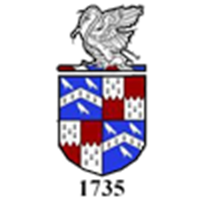Science
Y6 into Y7 Science Project Work - Summer Holidays
Hello Year 6
In preparation for some of the Science topics you will cover in Year 7, we would like you to have a go at some of the projects below. If you would like to explore further, there is loads of fab information on the BBC bitesize website.
We hope you enjoy the projects and we look forward to seeing examples of your work when we meet you.
From,
The Science Department
Biology – Draw and label the parts of a flower, including their function. If you can, dissect a flower (see http://sloely.com/dissecting-daffodils-pollination/ for an example method), take a picture of it and label the parts. Explain why bees are attracted to flowers, and their role in reproduction, then explain the different ways that plants can reproduce and spread their seeds. Give examples of these and present this as a fact-file. Include in this, a labelled diagram of a plant cell – what structures does a plant cell have? You could also compare this to an animal cell. A great resource for this is: https://www.bbc.co.uk/bitesize/topics/znyycdm/articles/zkm7wnb
Chemistry – produce a poster on the three main states of matter (sold, liquid and gas). You can observe the changes to an ice cube to help you with this, or a square of chocolate on a warm day in the sunshine! On your poster include information about the energy and movement of the particles when they move from one state to the next, and what these changes of state are called. Use: https://www.bbc.co.uk/bitesize/topics/z9r4jxs/articles/zqpv7p3 to help you.
Physics – Investigating Waves
Light Waves 1
1. Draw an arrow, nice and bold on a piece of paper.
2. Put the piece of paper behind a glass, so that the arrow is clearly visible.
3. Now fill the glass with water.
4. What do you notice has happened?
5. Investigate and explain why this has occurred.
Light Waves 2
1. Observe a pencil
2. Now put the pencil into a glass of water
3. What do you observe appears to have happened to the pencil?
4. Explain this.
Light and Sound Waves: Investigate all the different types of waves that transfer both light and sound energy. The links below will help you investigate. https://www.bbc.co.uk/bitesize/guides/zq7thyc/revision/1
https://www.bbc.co.uk/bitesize/guides/z8d2mp3/revision/1
https://www.bbc.co.uk/bitesize/topics/zw982hv/articles/zg8rxfr

